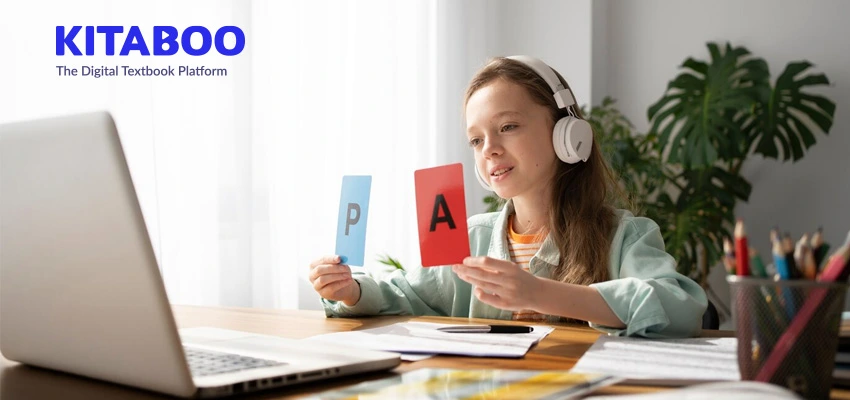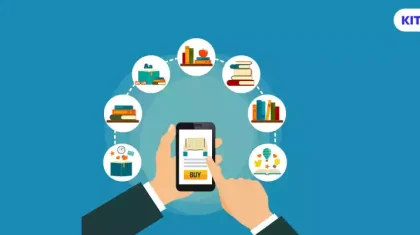
10 Critical Mistakes K12 Publishers Make in Digital Content Creation and How to Avoid Them
Summarize this blog with your favorite AI:
With the global online education market expected to grow drastically, digital content creation has become a top priority for K12 publishers. However, to make this shift smooth it is important for publishers as well as content creators to avoid common mistakes when building or creating their digital curriculum.
To help you navigate this space better, this post will identify the common pitfalls K12 publishers face and outline various clear and actionable strategies to help prevent them.
Table of Contents:
I. Mistakes K12 Publishers Should Avoid While Creating Digital Content
- Weak Instructional Design
- Poor User Experience
- Lack of Consistency
- Not Using DRM Controls
- Not Prioritizing the Structure of Your Digital Curriculum
- Having Only One Type of Content
- Forgetting to Promote Your Digital Content
- Neglecting the Importance of Interaction
- Not Partnering with a Digital Publishing Platform
- Not Focusing on Visual Appeal
II. To Conclude
Mistakes K12 Publishers Should Avoid While Creating Digital Content
To ensure that your efforts of creating, editing, formatting, publishing, and selling digital content are effective, here are some of the mistakes that, as K12 publishers, you need to avoid-
1. Weak Instructional Design
One of the biggest mistakes K12 publishers make while creating content is a weak instructional design that does not focus much on the target audience they are trying to connect with.
The issue here is that the content produced does not solve their problems or educate them about the things they are interested in. This means that content does not connect well with the audience, and unfortunately, this becomes the number one mistake publishers make over and over.
How to Fix
To create truly engaging content, K12 publishers need to understand the users they’re trying to reach and what they need. The best way here is to work on highly-developed pedagogical content knowledge as teacher-designers, ground all your design decisions in theory, and actively seek research evidence to support the decision-making.
2. Poor User Experience
When it comes to creating effective K12 content, it is important to ensure exceptional user experience. However, many K12 publishers do not prioritize this area and come up with content that is dull with no artwork, attractive design, effective navigation, interactive digital components, and more, leading to poor UX.
How to Fix
For young K12 readers, presentation is one of the most crucial aspects of the content. This means that educational or K12 publishers need to think ahead continually about offering exceptional user experience in terms of what’s possible, what’s useful, and what K12 students might want for better learning outcomes.
3. Lack of Consistency
Creating and curating high-quality, relevant content consistently is one of the biggest challenges that K12 publishers face. Keeping in mind the rapid changes in comprehension levels amongst K12 learners, this segment can be quite tricky to cater to.
How to Fix
As a publisher, the need is to ensure that the level of interactivity you offer through your content is age-appropriate and your content meets both curriculum and learning objectives. Likewise, you can partner with a robust digital publishing platform such as KITABOO, which eases the process of regularly updating and modifying content.
4. Not Using DRM Controls
One of the other common mistakes that K12 publishers make is not protecting their digital content using proper DRM controls. It is important to make sure that users (including teachers and students) are not able to share the content with anyone who has not paid for the right to access it.
How to Fix
With robust digital rights management (DRM) controls, K12 publishers can ensure full control over the licensing and maintain full authority of their valuable intellectual property (IP). DRM allows you to control who can access your content, for how long, and on how many devices.
5. Not Prioritizing the Structure of Your Digital Curriculum
In K12 publishing, a lack of careful structuring of the educational materials can quickly backfire. Apart from leaving readers confused, it can also leave questions about which type and format of content is used to make up a lesson, which lessons are picked to formulate a module, and how many modules are utilized to make up an entire course.
How to Fix
To fix the issue, it is important to structure your educational materials carefully. For instance, you may skip including entire modules or courses in your digital curriculum if it is straightforward or if the lessons are a subset of an overall curriculum. Instead, you can develop course materials while keeping your end-user in mind and thinking about what they need.
6. Having Only One Type of Content
K12 learners typically have a better learning experience when they are presented with a wide variety of diverse content. This is because new or abstract concepts are easily retained when various kinds of channels are used. Not having varied and interactive content with different formats for presenting your content in interesting ways is a common mistake that K12 publishers make during content creation.
How to Fix
Make sure to prioritize formatting with the right use of both fixed (static) layout and reflowable (dynamic) layout. While the fixed layout is preferred for digital content with images and complex designs, a reflowable layout is used for content with more text. Choosing a suitable layout can heavily influence the overall reading experience for K12 learners.
7. Forgetting to Promote Your K12 Content
Even the best content requires proper promotion to reach the right audience. If you’re not actively promoting your K12 content through various channels such as marketing, social media, and partnerships, it’s quite difficult to gain the traction it deserves.
How to Fix
Make sure to identify the appropriate channels and audiences, and use the right mix of organic and paid tactics to distribute your content effectively.
8. Neglecting the Importance of Interaction
Leaving out any kind of interaction is among the other common mistakes that K12 online course creators and publishers make. It is important to understand that passive learning can be demotivating and boring for many students and can lead to poor learning outcomes.
How to Fix
To avoid this mistake, course creators should use a conversational style instead of formal language during multimedia instruction. For instance, some of the interaction ideas you can include in your course are interactive questions, quizzes & polls, comment sections, interactive videos, storytelling, and so on.
9. Not Partnering with a Digital Publishing Platform
Another common mistake that publishers make while creating online content is not partnering with a good digital publishing platform, leading to a range of issues in terms of formatting, editing, and distribution of content.
How to Fix
To avoid this mistake, you can select a credible and performance-oriented digital publishing platform that can take care of everything from editing, layout, conversion, and formatting to the distribution process of your eBook.
10. Not Focusing on Visual Appeal
Yet another mistake that K12 publishers make while digital content creation is not focusing on the visual appeal of the content distributed or sold through digital channels.
How to Fix
Since digital content doesn’t allow users to touch or feel the book physically, publishers should utilize all possible opportunities to make the digital content aesthetically appealing and compelling enough, thus encouraging the buyer to make the purchase.
To Conclude
Avoiding common mistakes when creating digital content for K12 learners is only possible when collaborating with an experienced and dedicated content partner. KITABOO specializes in developing online content and has created effective and interactive courses for clients in various domains.
Top digital publishing platforms such as KITABOO offer the required functionality to embed multimedia content, leading to an interactive experience that can help you stand ahead of the competition.
If you are looking to update your digital content publishing strategy by finding the right balance between content quality and quantity, start using KITABOO, a powerful, cloud-based, and secure digital publishing platform.
Talk with our experts for more details.
Also check:
- Digital Textbook Platform for K12 Publishers
- Digital Textbook Platform for Associations & Societies
- Digital Textbook Platform for Trade Publishers
- Digital Textbook Platform for Training Companies
- Digital Publishing Solution for Content Aggregators
- Digital Publishing Platform for Professional Training
Discover how a mobile-first training platform can help your organization.
KITABOO is a cloud-based platform to create, deliver & track mobile-first interactive training content.



